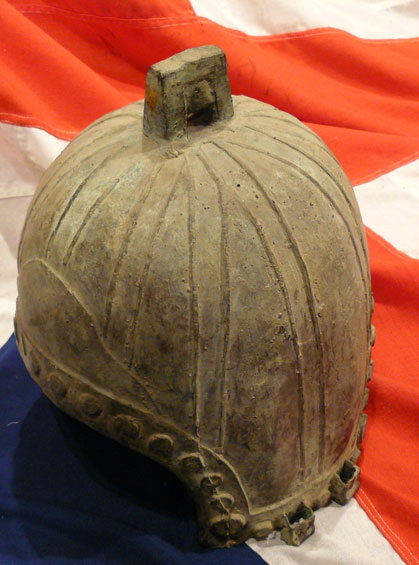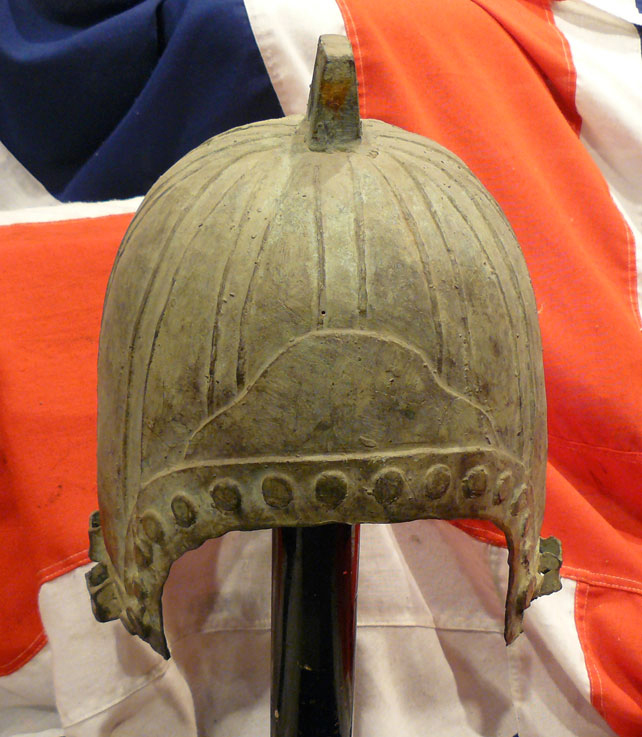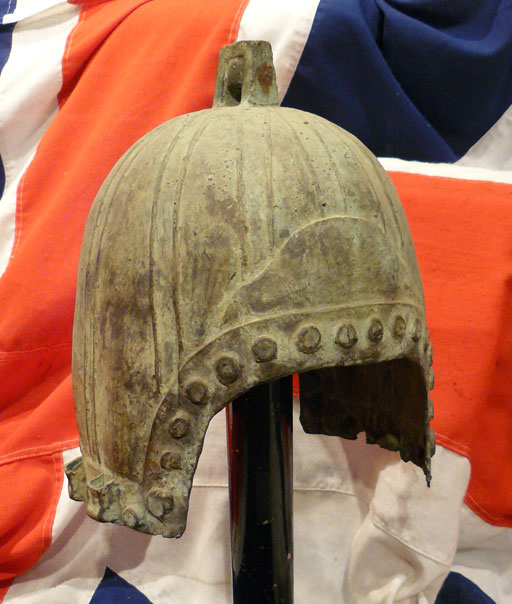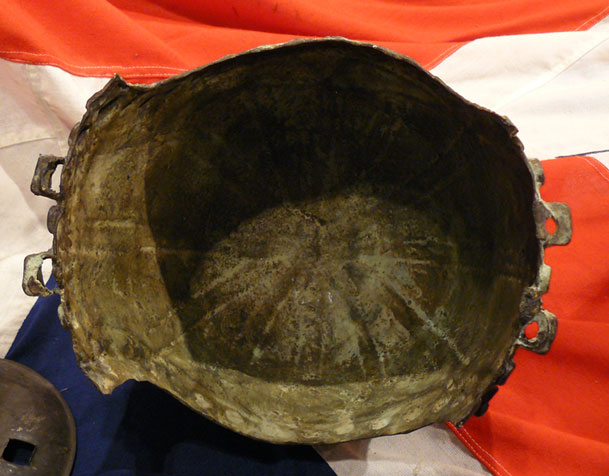Historismus Chinese Bronze Helmet, Ancient C.400bc Warring States Era Style
A fabulous statement piece, ideal for a interior decor centrepiece. Probably mid 19th century. With good green aged patination, and as tradition dictates, cast in one piece. In the past 30 years or so we have had only a very few of this style of helmet, and just two have been original and the correct age that they should. This is a Historismus period example. It is a most beautiful work of art, extremely pleasing, decorative, and it would compliment any historical or classical display of arms or antiques. We don't normally acquire or sell non period items but historismus pieces have always been desireable and most collectable in their own right. Historicism or also historism and historismus comprises artistic styles that draw their inspiration from recreating historic styles or imitating the work of historic artisans. This is especially prevalent in architecture, such as revival architecture. Through a combination of different styles or implementation of new elements, historicism can create completely different aesthetics than former styles. Thus it offers a great variety of possible designs.
In the history of art, after Neoclassicism which in the Romantic era could itself be considered a historicist movement, the 19th century saw a new historicist phase marked by an interpretation not only of Greek and Roman classicism, but also of succeeding stylistic eras, which were increasingly considered equivalent. In particular in architecture and in the genre of history painting, in which historical subjects were treated of with great attention to accurate period detail, the global influence of historicism was especially strong from the 1850s onwards. The change is often related to the rise of the bourgeoisie during and after the Industrial Revolution. The history and evolution of armour in Chinese warfare is difficult to ascertain with certainty, given its often perishable nature, but text descriptions and appearances in art, such as in wall paintings and on pottery figurines, along with surviving metal parts can help reconstruct major developments. Just who wore armour and when is another point of discussion. Military treatises of the Warring States period (c. 481-221 BCE) suggest that all officers of any level wore armour. The same sources contain references to commanders keeping armour in storage bags and distributing it to troops, but at least some of the ordinary conscripted infantry probably had to provide their own. This obviously depended on their means, and being farmers it is unlikely to have been a realistic possibility for most. 31 cm high, weight 3 kilos.
Code: 22225
995.00 GBP






